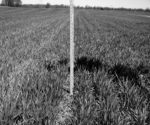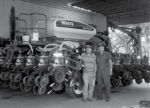Advertise Follow Us
Cover Crops
Is it Time to Replace Your Spray Nozzles?
Calibrating sprayers and checking nozzles step by step can prevent costly misapplication of your chemicals.
Read More
No-Till Advocate Gets Around And Keeps His Eye On Cover Crops
Indiana official shares his experiences and views on the benefits of cover crops for no-till fields.
Read More
What I've Learned from No-Tilling
Yes, You Can No-Till Into Live Cover Crops
Important lessons are still being learned, but the system further protects the soil for long-term benefits.
Read More
Our Soil, Our Life
No-tilling helps this Wisconsin couple improve soil quality and preserve it for future generations.
Read More
No-Tilling Into Live Cover Crops Could Mean Early Seeding Benefits
Experimental system could protect soil and moisture while overcoming the problems of cold, wet ground.
Read More
What I've Learned from No-Tilling
No Reason To Accept Yield Drag With No-Till
Aiming for high yields is key to the success of this no-till operation.
Read More
Glyphosate-Resistant Ryegrass Confirmed In Oregon Testing
Researcher recommends no-tillers keep a wary management eye on the increasingly popular cover crop, already tough to control with glyphosate
Read More
Gear Up For Roundup Ready Alfalfa
This new technology offers no-tillers new opportunities for longer rotations, higher forage yields, improved crop quality and unique weed control options.
Read More










